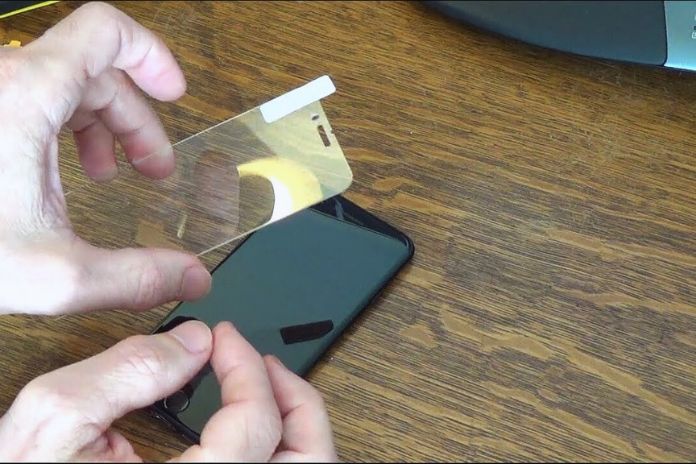Because smartphones allow us to stay permanently connected, communicate with our loved ones, access a multitude of information, entertain ourselves, and even carry out specific professional tasks, they are now essential companions in everyday life. However, due to their daily use, the screen of these devices is exposed to various unfortunate incidents, which requires better protection. The solution? Use protective tempered glass. But, how to choose this accessory and why is it essential to protect your smartphone well? Find the answers to these questions in this article.
Screen Protection: Why Choose Tempered Glass?
Protective tempered glass for smartphone screens is an innovative solution that provides an effective barrier against scratches, impacts and cracks. It is more resistant than conventional glass and is obtained through a heat treatment which consists of heating the glass to a very high temperature before being suddenly cooled.
As explained on the site https://vitre-protection.fr, this is a manufacturing process that gives increased strength to the latter and makes it less dangerous in the event of breakage because the pieces are less sharp. and more diminutive. A tempered glass screen protector is a preferred choice for your smartphone because its lifespan is significantly longer than that of a plastic film.
In addition, unlike traditional glass, tempered glass offers up to five times more shock resistance, making it an ideal choice for the fragile screen of your smartphone. What’s more, it is resistant to scratches and even oily fingerprints, thanks to the oleophobic coating. So, if your device falls, the shock will be absorbed by the tempered glass. It can even crack. On the other hand, the screen of your smartphone will be spared.
What Is The Ecological Issue In Preserving Our Smartphones?
Did you know that manufacturing a smartphone requires more than 70 different materials? Plastic, synthetic materials, copper, chemicals, glass, ceramics, iron derivatives, precious metals, and even rare piles of earth. However, as these devices are currently mass-produced, the extraction and processing of these raw materials has a detrimental impact on ecosystems.
But what does a screen protector have to do with all of this? Well, the smartphone screen contains rare earths, including indium, to make it tactile, europium, terbium, gallium, yttrium, lanthanum, gadolinium, dysprosium and praseodymium for its backlighting.
As some of these components are used in minute quantities, unfortunately, they cannot be recovered and recycled. Moreover, it is estimated that within 100 years, specific rare earth resources will dry up. Consequently, protecting your smartphone with tempered glass reduces the risk of breakage but, above all, extends its lifespan and limits electronic waste.
How To Choose Your Tempered Glass?
Choosing a glass adapted to the brand and model of your smartphone is essential so as to maintain the quality of touch and vision of your screen. Here are some tips for a sustainable choice of tempered glass protection.
Consider The Quality Of The Tempered Glass And Its Level Of Tempering
The quality of a screen protector depends significantly on the manufacturing process and how long the glass is soaked. Depending on the model, the soaking time may vary from around ten minutes to 4 hours. However, it is estimated that the minimum duration to obtain a satisfactory level of protection is 2 hours. That said, the higher this duration, the better its hardness and its expensive price. For increased resistance against scratches and everyday shocks, choose tempered glass with a hardness greater than 9 HV.
Choose A Glass With Appropriate Thickness And Dimensions
Thickness is a criterion to take into account when choosing your screen protection. If the standard thickness of tempered glass is between 0.25 mm and 0.35 mm, the market offers models that range from 0.10 mm to 0.50 mm. However, to maintain its flexibility, your tempered glass must not exceed 0.3 mm in thickness and must also be fitted and adjusted to your screen. As there are protections for each brand and model, be sure to choose a custom one because cutting tempered glass removes all of its properties.
Make Your Choice On The Shape Of The Tempered Glass
There are different categories of tempered glass screen protectors depending on the model and characteristics of your smartphone. If the 2D protective glass corresponds to a standard flat mirror, the 2.5D shape has slightly curved edges and offers a higher level of quality. For maximum protection of the screen of your smartphone, the 3D protective glass is the one to choose because it adapts precisely to the contours of the phone and even covers the curved edges.
Opt For Protective Glass With Suitable Fixation
The quality of the materials chosen to attach the tempered glass influences the effectiveness and lifespan of your screen protector. For smartphones with a perfectly flat screen, a nano silicone film will increase the comfort of use and the lifespan of protection. In the case of a curved screen, I prefer fixing it with side glue strips.
Choose Your Tempered Glass According To Its Transparency And Your Needs
The comfort of use and the image quality of your screen depend on the level of transparency of the protective glass. Opt for models that offer a light penetration rate greater than 90%. For information, although the majority of tempered glass on the market provides a transparent finish, there are other ranges with specific finishes:
- Privacy: which helps protect your privacy from prying eyes on the side;
- BlueLight: which filters the blue light emitted by your screen for less eye fatigue;
- Mirror: this allows you to use your screen as a pocket mirror when it is turned off.
Read Also: Asus Rog Phone 7: The Ultimate Gaming Smartphone

